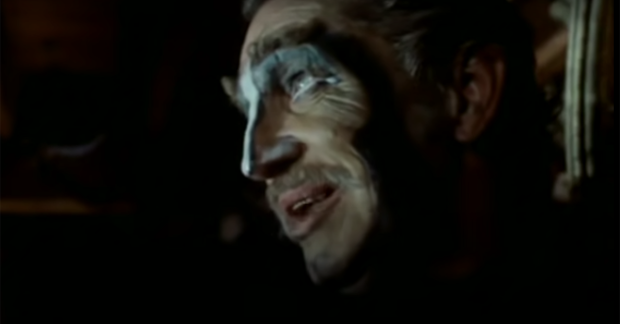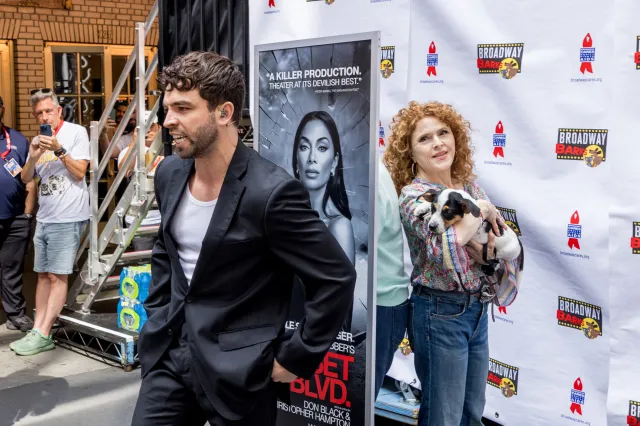Vincent Price and Diana Rigg Cut Down Critics in Theatre of Blood
In this little-known horror movie, Price plays an aging actor who dispatches his detractors in ways created by Shakespeare.

(image via YouTube)
Two questions are almost inevitable when discussing the 1973 horror film Theatre of Blood.
Tell someone not previously informed about the Vincent Price vehicle, in which an old school classical actor systematically kills critics according to templates found in Shakespeare plays, and they'll incredulously reply, "Is that really a movie?"
Talk about Theatre of Blood with anyone in the theater community who has seen the movie, and they'll ask, "Shouldn't it be adapted for the stage?"
The answer to both questions is ""Yes," with the second answer featuring the addendum, "It already has been, at the National Theatre in London, in 2005."
Elaborating on the questions in order, Theatre of Blood was one of the last films of Vincent Price's horror career, which spanned the late 1950s to the early 1970s. Price was an icon of that genre, mentioned in the same breath as Boris Karloff, Bela Lugosi, and Christopher Lee by aficionados. But unlike the best-known work of his peers, Price's films – despite their promotional build up – were often as not rather tame and could easily slip into comedy. Budgets were frequently, to put it kindly, limited.
The erudite, subtly campy Price, recently lauded for his anti-racist activism in a much earlier era, always seemed to be playing variations on a single character who, based on talk show appearances, was much like Price himself, except that in real life Price was, by all accounts, a benevolent raconteur and cultural connoisseur.
The premise of Theatre of Blood is practically its entire synopsis, with out-of-date Shakespearean trouper Edward Lionheart (think a somewhat less decrepit Albert Finney in The Dresser) returning from the dead to systematically eliminate his elitist detractors. Save for a few brief graphic moments, it's not really very scary at all and those with a taste for dark humor (and Shakespeare, of course Shakespeare) might well laugh aloud at the Grand Guignol-evoking deaths. Genre fans may sense déjà vu with Blood, since it followed The Abominable Dr. Phibes, in which Price's titular character dispatched victims in the style of the ten biblical plagues.
For theatre folk, almost 50 years after its release the film exerts a certain hold, not least for its wish fulfillment of many artists in seeing critics offed – not that such extreme measures should ever be considered in real life. But Theatre of Blood also offers glimpses of some of England's great character actors of the era, including Robert Morley, Michael Hordern, Robert Coote, and Coral Browne (who subsequently became Price's third wife), as well as an early career Diana Rigg, in a role that, to describe it, would be a spoiler in and of itself.
Theatre of Blood (2005) from Improbable on Vimeo.
Years later, the British company Improbable translated Theatre of Blood to the stage at the National, with Jim Broadbent as Lionheart and Rachael Stirling, Rigg's daughter, taking on the role her mother played on screen. While the first act hews closely to the film, the action is all limited to the confines of a decrepit auditorium.
It is in the second act where the adaptation, created by Lee Simpson and Phelim McDermott, becomes something wholly its own, leaning into the theatrical themes, including discussions of acting and criticism, the nature and changing styles of theater, government funding and institutional theater, and in a very specific inside joke, whether or not the riverside National (under construction in 1973, when the play and film are set) is such a good idea.
The murders as depicted in the play are simultaneously more graphic and outlandish, with Lionheart shown to be a genuinely bad actor, as opposed to one out of step with the times, and the overall production (available to watch on Vimeo) seems to blend the original film with echoes of both Sweeney Todd and Clue. Even seen at the remove of a rudimentary recording, the National's production – the only major incarnation to date – seems a tricked-out treat,
The Simpson-McDermott stage version of Theatre of Blood takes what was a clever film idea executed with perhaps less style than it deserved and adds depth of both intellect and character with which the film was largely unconcerned. That it retains the film's antiquated vision of gay characters (softened at the National by the presence of legendary gay rights activist and artist Bette Bourne as a flamboyant critic) and gives brief voice to an ugly racial stereotype are unfortunate distractions which briefly ground what should be a soufflé – or at least a pie by way of Titus Andronicus.
Replete with inside jokes about life on the stage, there is no question that the Simpson-McDermott Theatre of Blood belongs on any list of plays about the theatre, alongside everything from The Entertainer to The Drowsy Chaperone, to name but two. The adaptation deserves another look, especially during the current "spooky season," as retailers now brand October when they're not pushing pumpkin spice.
After going from movie to play, we all know what should be next for Theatre of Blood. Make room, Carrie, Audrey II, and Toxie: Edward Lionheart is overdue for his 11 o'clock number, and we all know what happened to those who keep him from his audiences.
Watch the film Theatre of Blood below:








